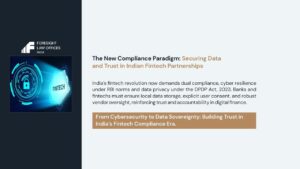Should we keep the clause flexible or lock it in an institution?” If you draft India-related contracts, that single choice—ad hoc vs institutional arbitration—will shape how fast, costly and enforceable any future dispute becomes. Below we unpack the legal backdrop, 2024-25 data, Supreme Court signals and a practical decision framework for Indian and cross-border businesses.
Quick Definitions
| Term | What it means in India |
| Ad hoc arbitration | Parties design the procedure themselves, relying on the Arbitration & Conciliation Act 1996 (“Act”) and court support for appointments, fee-caps, timelines, etc. |
| Institutional arbitration | An established centre (eg MCIA, DIAC, ICA or a foreign seat such as SIAC) administers the case under its published rules, fee schedule and secretarial support. |
Despite two decades of reform, 90–95 % of Indian arbitrations are still ad hoc—but that share is shrinking as institutions scale up. (CDR Centre)
Legal & Policy Backdrop
- Arbitration & Conciliation Act 1996 – baseline rules for all arbitrations.
- Section 29A (2015 amendment) – 12 + 6-month time cap for making awards; extensions need court leave, a pain-point in ad hoc cases. (Kluwer Arbitration Blog)
- 2019 Amendment Act—Part IA – legislates the Arbitration Council of India (ACI) to grade institutions and draft model rules. The ACI is still not operational, creating uncertainty for ad hoc oversight and quality benchmarks. (Department of Legal Affairs, Moneycontrol)
- 2024 Draft Amendment Bill – proposes 60-day court time-lines and stricter Section 8 referrals, again nudging users toward structured processes. (White & Case)
- Bar Council of India 2025 Rule change – opens India to foreign law firms, part of the broader push to make the country an arbitration hub. (@EconomicTimes)
Judicial Winds Are Blowing Institutional
- Constitution-Bench guidance (2024) reaffirmed equal treatment and arbitral impartiality, praising institutions for systemic safeguards. (Mondaq)
- Supreme Court, May 16 2025: “Shoddy arbitration clauses waste judicial time—drafters should be penalised.” The Court urged parties to adopt clearer, institution-style clauses to avoid decade-long skirmishes. (The Times of India)
Together these rulings signal a judiciary that rewards institutional rigour and punishes DIY chaos.
Side-by-Side Comparison
| Factor | Ad hoc | Institutional |
| Cost visibility | No admin fee, but tribunal fees vary; Section 11 court fees if appointment disputed. | Up-front schedule; admin fee + capped tribunal fees (MCIA/DIAC). |
| Speed | Depends on party cooperation; court extensions under Section 29A common. | Built-in timelines; emergency & expedited tracks (DIAC 2023, SIAC 2025). (dhcdiac.nic.in, Nishith Desai Associates) |
| Procedural certainty | Parties craft rules; gaps invite court intervention. | Published rules + secretariat oversight minimise guerrilla tactics. |
| Quality control | No panel vetting; parties risk biased or inexperienced arbitrators. | Curated panels, challenges heard internally, reducing bias risk. |
| Enforcement perception | Awards sometimes viewed as less predictable, prompting challenges. | Courts increasingly deferential to institution-governed awards. |
| Flexibility | Maximum—parties can tailor every step. | Limited to institution’s rule-set but still allow bespoke choices. |
| Suitable for | One-off, low-value, highly specialised technical disputes. | Repeat, cross-border, high-stake or multi-party deals needing structure. |
Cost Myths—Busted
Indian commentary now shows institutional fees rarely eclipse 10 % of total dispute spend, while they slash hidden costs (court motions, scheduling delays). (Bar and Bench – Indian Legal news)
Arbitrator fee uncertainty remains a sore point in ad hoc cases; institutions publish caps or use hourly brackets to curb surprises. (Mondaq)
Government & Sector-Specific Nudges
- Public-procurement Guidelines 2024 advise state entities to consider institutional rules to curb cost overruns. (aria.law.columbia.edu)
- Oil & gas PSC draft 2025 still mandates India-seat arbitration but lets foreign partners opt for overseas institutions—evidence that private users trust institutional mechanisms more. (@EconomicTimes)
Decision Checklist for India-Centric Deals
- Stake size & complexity – If > INR 50 crore or multiple parties, default to an institution.
- Seat strategy – Combine Indian seat + MCIA/DIAC rules for local asset enforcement, or Singapore seat + SIAC for neutrality and quick interim relief.
- Sector sensitivity – Infra & PPP deals: institutions reduce state-entity delay risk; tech startups: ad hoc may suffice for modest valuations.
- Time-critical disputes – Pick institutions offering emergency arbitrator relief (MCIA Rule 14; SIAC Schedule 1).
- Drafting clarity – Even in ad hoc, borrow the DIAC 2023 model clause to avoid SC-flagged “shoddy” language. (The Times of India)
Sample Clauses
Institutional (MCIA, Indian seat)
“All disputes…shall be finally resolved by arbitration administered by the Mumbai Centre for International Arbitration (MCIA) in accordance with its Rules. Seat: Mumbai, India. Language: English.”
Balanced Ad Hoc
“Disputes…shall be resolved by a sole arbitrator appointed by mutual consent, failing which under Section 11 of the Act. Seat & venue: Bengaluru, India. Proceedings shall follow the UNCITRAL Arbitration Rules, 2021.”
Frequently Asked Questions
Q1 Is institutional arbitration always faster in India? Empirical MCIA data show median 15 months to award, versus ad hoc cases that often breach Section 29A’s 12 + 6-month cap and require court extensions. (SCC Arbitration Institute, Kluwer Arbitration Blog)
Q2 Does ad hoc save money? Not necessarily—hidden expenses (multiple Section 11/29A motions, venue logistics) can offset the absence of an admin fee. (Bar and Bench – Indian Legal news)
Q3 What if the ACI finally launches? Expect mandatory grading of institutions and model rules for all ad hoc cases—another nudge toward structured arbitration. (SCC Online)
Q4 Can parties switch from ad hoc to institutional after a dispute starts? Only by mutual consent; otherwise the original clause governs. Courts will not rewrite the contract.
Q5 Which Indian institution is best for cross-border deals? MCIA offers international panels and emergency relief; DIAC is popular for domestic infra; IAMC targets energy & Middle East trade.
Remarks
India’s arbitration ecosystem is at an inflection point: courts, policy-makers and users are converging on institutional discipline while retaining ad hoc flexibility for smaller, specialised fights. The safest play? Adopt a modern institutional clause—or an ad hoc clause that looks and feels institutional.






